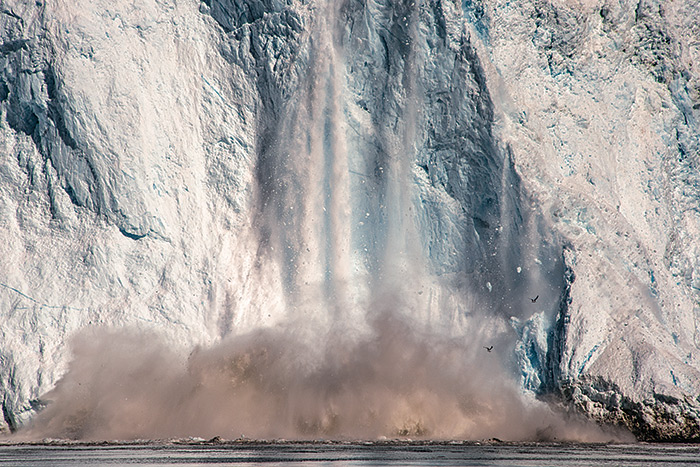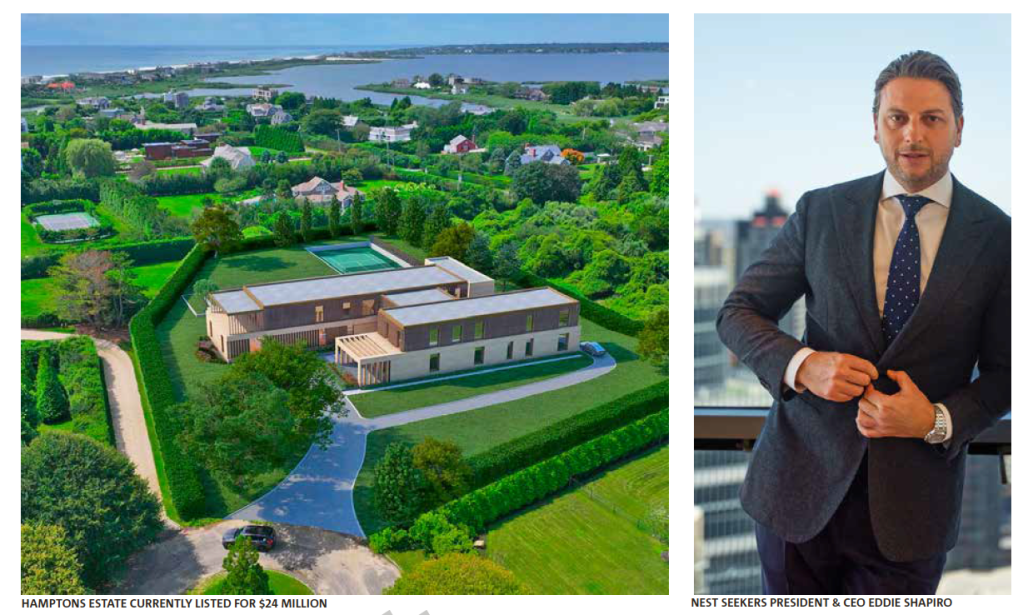Artist Diane Tuft's 'The Arctic Melt' Explores Climate Crisis

Water Mill’s Diane Tuft is a mixed-media artist who has focused primarily on photography since 1998. In that capacity, she has traveled to remote areas throughout the world in order to record environmental changes in Earth’s landscape. She’s certainly no stranger to danger or to remote, desolate places. Once, on a trip to Ireland, Tuft wanted to photograph the famous Cliffs of Moher. The light was perfect and she wanted to capture it before it rained—a common occurrence in Ireland. “With tripod in hand, I climbed over the metal barrier onto the grass,” she said during a recent interview. “I didn’t realize the moisture under the grass acted like ice. My sneakers couldn’t grasp the grass and I slid a few feet short of the cliff falling on my tripod and camera, which cut my head. I bled for 24 hours until a doctor could stitch my cut.”
Her new book, The Arctic Melt: Images of a Disappearing Landscape (Assouline, $95), is a brilliant monograph showcasing her breathtaking and visually astounding journey to places throughout the Arctic Circle—including the North Pole—to capture the ice before the constant melt renders the once-frozen landscape unrecognizable.

Arctic Melt follows 2014’s Gondwana, Images of an Ancient Land with its more than 50 photographs chronicling her trip to Antarctica to study and document the effects of ultraviolet and infrared radiation on the landscape. Tuft calls Lake Vanda in Antarctica the most visually stunning place she’s ever been: “I could not stop photographing it,” she said. “I probably could have stayed there for four days. It was like walking on faceted diamonds with occlusions and flowers enclosed in shimmering ice that was thirteen feet deep.”
Most of us aren’t lucky enough to have visited the arctic, though we all have an idea of what it might be like. Though maybe not: “As much as I had read about the arctic melting, it was much more drastic than I expected. I didn’t expect that the Arctic Ocean would have so many areas of open water,” she said, adding that the temperature was 32° F and the ice was so thin they were unable to disembark from their ship. “I had been to Greenland nine years prior to this visit and the difference in the landscape was shocking.”

Tuft says she would like to return to Greenland in nine years to document further changes in the landscape. “The Greenland ice sheet was once fluffy snow,” she says, describing the landscape as it was. “Now it’s peaks of ice and silt rising up through melt water ponds. Icebergs in Disko Bay rose 150 feet out of the sea. Now, Disko Bay is studded with hundreds of tiny icebergs, melting and falling into the sea every day. The glaciers have retreated in the past ten years, icebergs have shrunk and multiplied, and melt water is already considered ponds and lakes,” she explains. “I expect that climate change and global warming will continue and Greenland’s landscape will be drastically changed.”
On Earth Day this year, a chilling three-minute video, “The Arctic Melt,” was displayed on-stage at the National Mall during the March for Science in Washington, D.C. The presentation is comprised of footage and photographs from her journeys to the Arctic in 2015 and 2016 and uniquely visualized the devastating ice melt that is occurring due to climate change. Tuft sees her photography and her activism as inseparable: “As a visual artist that is documenting the effect of the environment on the landscape, I feel that it is my duty to share my visual imagery with the public,” she said, adding: “By presenting my work to the public, I can provide a platform to communicate the fragility that exists in nature and encourage people to support policy that will protect our environment and our Earth.”
For more information on the artist visit dianetuft.com. Tuft will be at BookHampton at 41 Main Street in East Hampton Saturday, June 3 at 5:00 p.m. for a discussion and signing. The event is free, but you can register at bookhampton.com.




